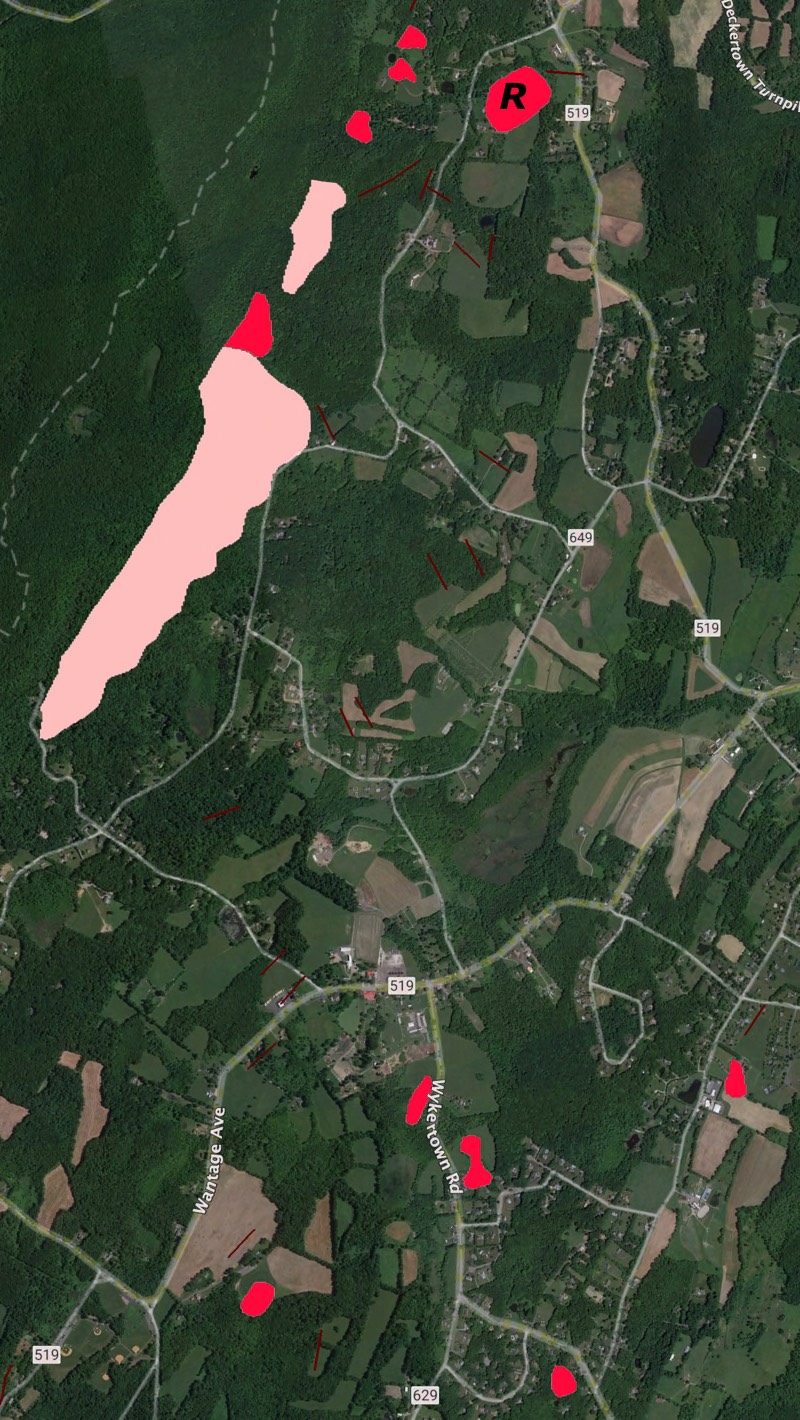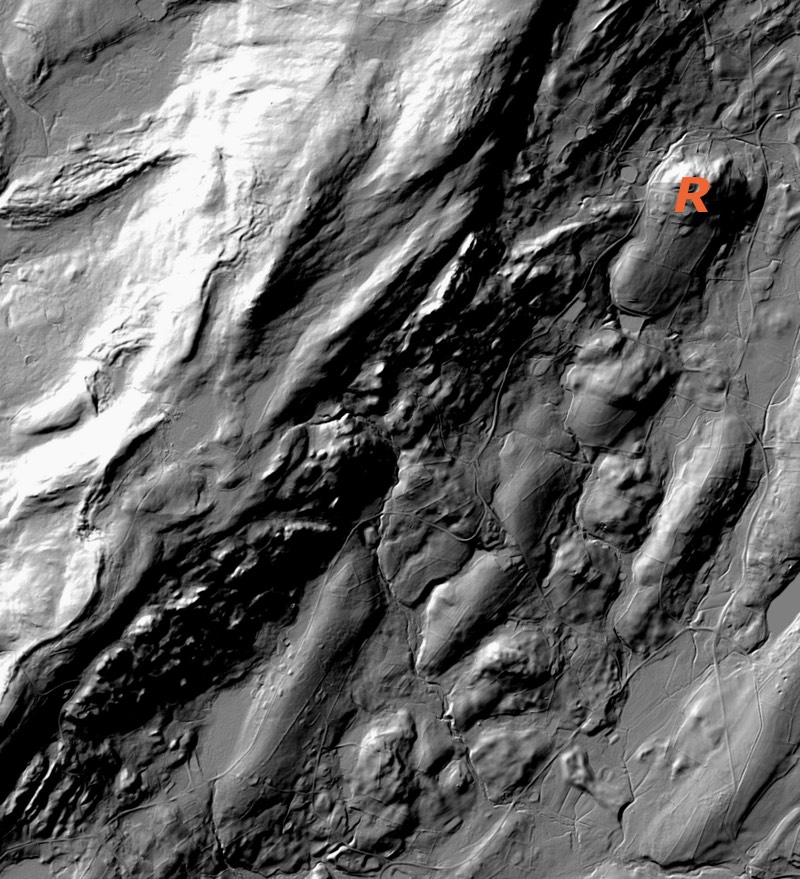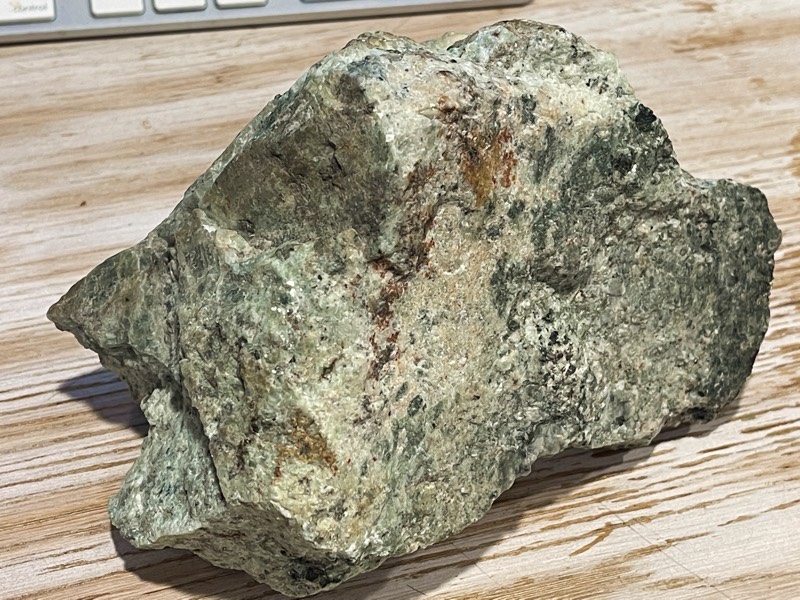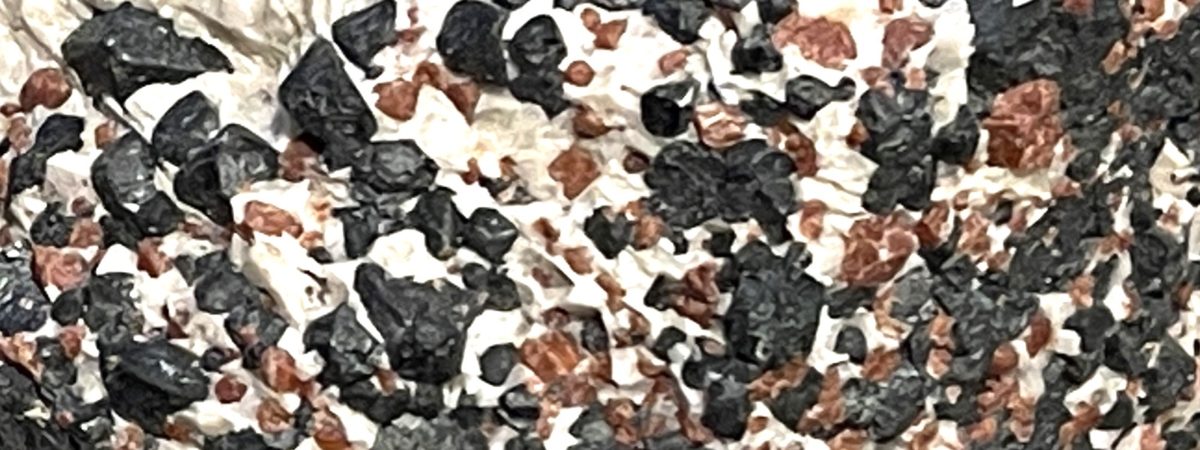Yesterday I was chatting with ChatGPT about New Jersey mining and zinc ore. Mindat.org is a better source of this information, but I was curious about ChatGPT’s knowledge.
Her response to a list of mines in New Jersey is very good, especially from the perspective of a hobbyist, historian, or local rock hound. There are active mining activities in New Jersey, but they are purposely not “well advertised”, so I cannot fault ChatGPT for not knowing about them. Mostly sand mining — sand for concrete needs to come from somewhere, and a lot comes from New Jersey. Other than Sterling Hill & the Franklin mines, I think Hibernia is worth mentioning because it is visually impressive, and it is fun to visit.
New Jersey was not a major mining state and there were a limited number of mines historically. Here is a list of some of the known old mines in New Jersey:
- Sterling Hill Mining Museum: located in Ogdensburg, it was a zinc mine that operated from the late 1700s to 1986.
- Franklin Mine (museum): located in Franklin, it was a zinc and iron mine that operated from the early 1700s to 1954.
- Bevans Mine: located in Andover, it was an iron mine that operated from the early 1700s to the late 1800s.
- Furnace Hill Mine: located in Andover, it was an iron mine that operated from the early 1700s to the late 1800s.
- The Mine Hill and Schuyler Copper Mine: located in Franklin, it was a copper mine that operated from the early 1700s to the late 1800s.
- The Copper Mine Hill: located in Mine Hill it was a copper mine that operated from the early 1700s to the late 1800s.
- The Morris Canal & Mining Company: located in Ledgewood it was a mining company that operated from the early 1800s to the early 1900s.
- The New Jersey Zinc Company: located in Franklin it was a zinc mining company that operated from the late 1800s to the mid-1900s.
- The Sussex Mine: located in Hamburg, it was an iron mine that operated from the late 1700s to the early 1800s.
- The Beemerville Mine: located in Beemerville, it was an iron mine that operated from the late 1700s to the early 1800s.
It’s worth noting that many of these mines are not in operation anymore and most of them are not open to the public. Some of them may have been converted into museums and open for visiting. Also, the information of these mines may be limited, and some others may have existed in the past but information about them is not well documented.
Historically, New Jersey was an important resource for iron, in the form of bog iron, clay for pottery, zinc, gravel, and sand for construction. Other than sand, it’s cheaper and more efficient to find these minerals and rocks elsewhere.
One challenge for the mining industry in New Jersey is most of the land is protected, or covered with sprawling residential neighborhoods, which are difficult to have removed, though in some cases I would like to. If I had Elon Musk’s type of money I would buy all of Parlin, New Jersey, and mine it for amber, clay, and lignite — maybe not mine it, just enjoy it from a rock collector perspective.
Here’s a hunk of zinc ore from Sterling Hill:
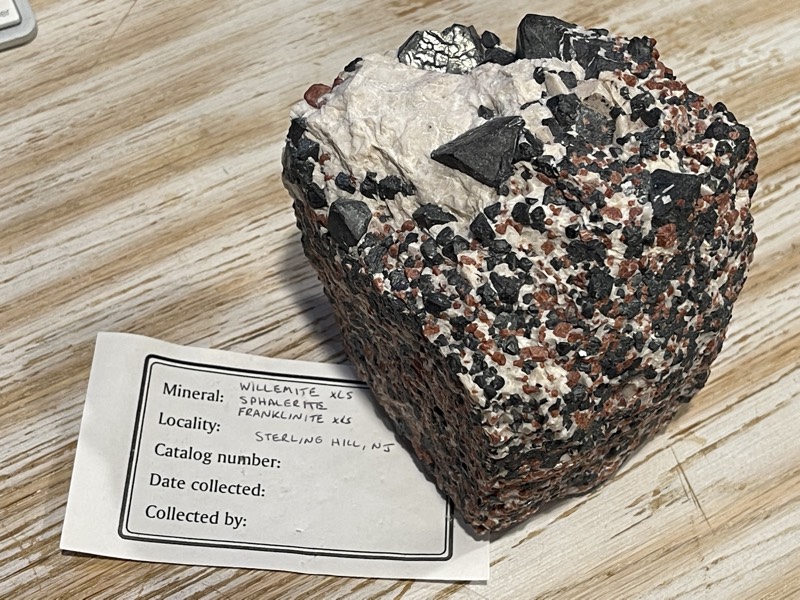
I also asked ChatGPT for a list of zinc ores. Three of them appear in the rock above.
Here is a list of zinc ores:
- Sphalerite (zinc sulfide)
- Smithsonite (zinc carbonate)
- Hemimorphite (zinc silicate)
- Calamine (hydrated zinc carbonate)
- Willemite (zinc silicate)
- Franklinite (an oxide of zinc, manganese, iron and nickel)
- Hydrozincite (hydrated zinc carbonate)
- Zincite (zinc oxide)
- Zinkenite (a sulfide mineral of zinc and lead)
- Siderite (iron carbonate) that contains zinc as impurity
Please note that this list is not exhaustive and there may be other zinc ores that have not been included here. Also, The amount of zinc that each ore contains varies greatly, depending on the location and quality of the deposit.
